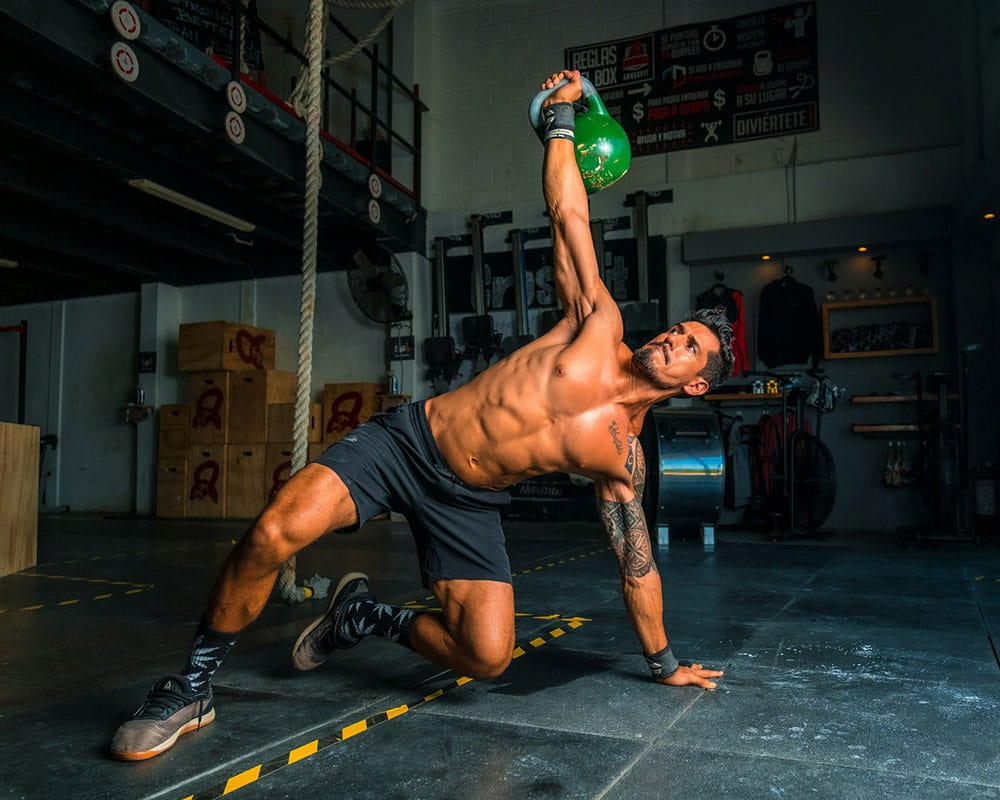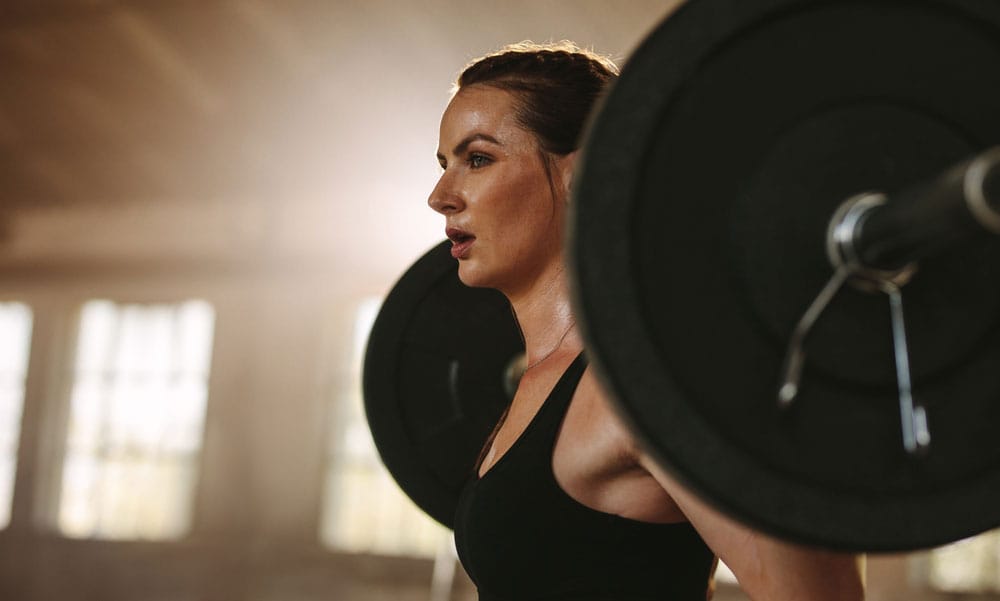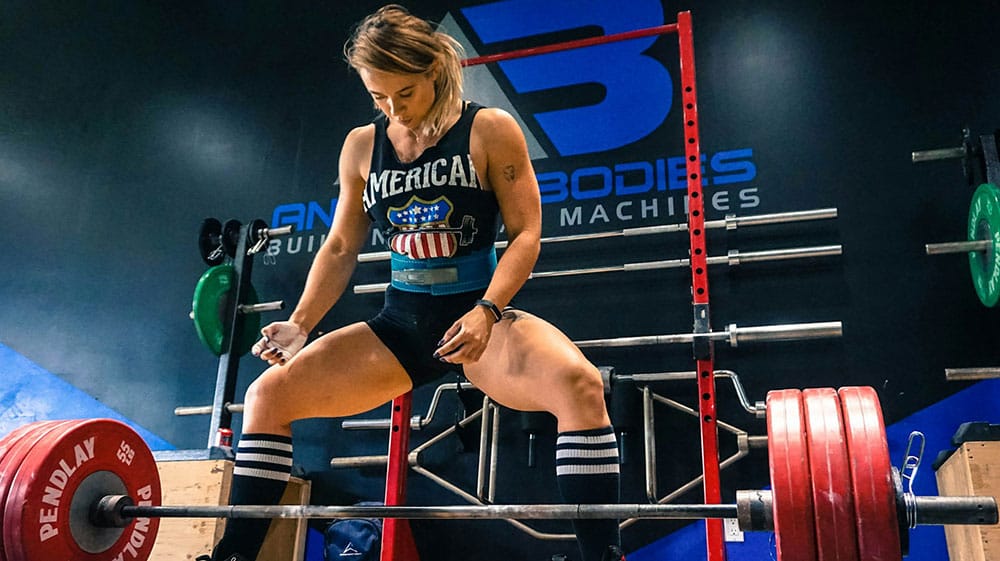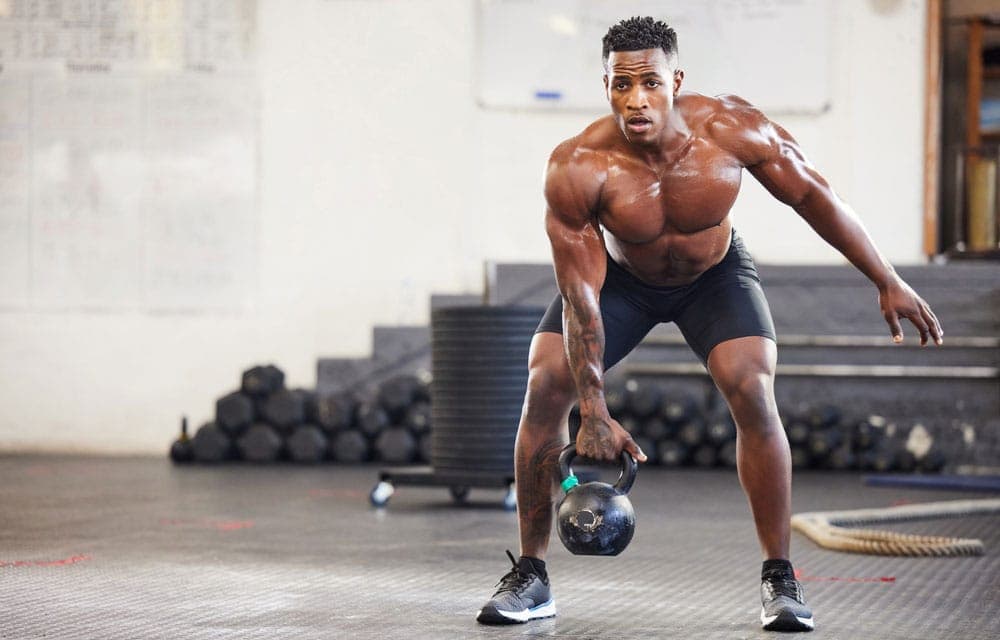PHAT Workout: Get Strong & Build Muscle
A guide to the PHAT workout. Learn how to master power hypertrophy adaptive training.
What is PHAT Training?
Do you want to workout to look aesthetic but not sacrifice strength gains?
Although any time you’re in the gym, you’ll see some overlap (noticing you both get stronger and look better), most people tend to veer in one direction or the other once they’ve progressed past beginner to a more intermediate level of training.
We all have different reasons why we work out.
Whether it’s to blow off steam, get huge or gain more functional strength, there’s no gym goal or target that’s objectively “better” than another.
It can be easy, though, to get siloed into one specific style of training— either A) for muscle growth or B) for strength (add an optional C) for endurance too).
This is where PHAT (Power Hypertrophy Adaptive Training) training comes in.
If you read our article on bodybuilder vs. powerlifter training, (which you should!), you’ll know a bit about how to train for power (powerflifter style) and how to train for hypertrophy (bodybuilders).
This training methodology combines both disciplines.
PHAT workouts function on a 5-day cycle with the days divided into hypertrophy, strength, and rest.
Let’s break it down and see how you can plan out a PHAT workout week.
What does PHAT mean in training?
First off, what does PHAT, as a name mean?
As mentioned, PHAT is power hypertrophy adaptive training. Power style training means any form of training that has strength and explosive power increases as a main goal.
Hypertrophy training means to train for muscle growth and size. This is usually a higher-rep, lower or medium-weight training style. This is more of a bodybuilder style of training. It incorporates:
- Odd sets (supersets, drop sets, etc.)
- Training to failure
- High-volume training (usually about 60-80% of a one-rep max over 3-6 sets of 6-12 reps)
Hypertrophy strikes a good balance between heavy enough load and high enough rep volume (any higher cracks into the endurance athletic range). This equilibrium forces your muscles to grow.
Finally, adaptive training is all about how your body adapts to stimuli. The stimulus or exercise changes based on how well your body responds to it during your training.
In sports rehabilitation science, especially, we throw around the term “periodization.” Current concepts in periodization define the term as “manipulation of training variables to bring out specific physical adaptations to hit certain goals.”
In other words, in a program like PHAT workouts, we are controlling for things like sets, reps, load and rest duration over a predetermined period of time.
How long can you follow a PHAT program?
Typically, a recommended guideline is at least 6-12 weeks, but you can do shorter. This will depend, however, on your schedule, training time constraints and prior fitness levels.
For those who are more on the beginner side and don’t lift as heavy weights, you may be able to keep this program up using your regular weights for a longer time.
This is because beginners have much more capacity for resistance training adaptations compared to those who are more in the intermediate to advanced category.
If you have a bit more experience and are lifting heavier weights, you may want to consider using deload days or weeks as part of your PHAT training program.
To deload means performing the same lifts, but at lighter weights, often only about 50-60 percent of your 1RM. You can also reduce the intensity of your training by lowering the volume and working with fewer sets and reps than you’d typically perform.
Deloading still lets you stick to your training plan but prevents you from experiencing the type of burnout that’s common in heavier power and hypertrophy training.
Benefits of PHAT Workout
Best of Both Worlds
As the name suggests, this combination of bodybuilding and powerlifting training makes PHAT an optimal way to gain both strength and size.
PHAT Workout— Origins
Where does the PHAT workout come from?
Dr. Layne Norton is a nutritional researcher, scientist, podcaster and bodybuilder who is the mind behind the PHAT workout.
Norton’s PHAT regimen comes from a mix of scientific research and his personal discoveries as someone who is active in the fitness space.
The program is mostly built off of heavy compound exercises— primarily squats, deadlifts, bench presses and rows.
PHAT Workout Split

Following the PHAT method, you’ll break your week down into a 5-day split (another workout that follows a 5-day structure is the bro split workout).
You’ll train for 2 days of power exercises, followed by one rest day, then 3 days of hypertrophy exercises and one more rest day.
Hypertrophy Workouts
To train for hypertrophy, a PHAT workout operates between the power and hypertrophy zones. For hypertrophy exercises, you’ll need to train at approximately 60-80% of your maximum (one-rep max or 1RM) strength capacity for high-ish reps.
Usually, about 6-12 reps is ideal for most exercises. Hypertrophy training also uses shorter breaks. Rest intervals between sets in strength training for hypertrophy are usually around 30 seconds to one minute long.
Strength and Power Workouts

To train your power moves, you’ll train in the 3-5 rep range for 3-5 sets. These workouts are designed to train maximal or close to maximal effort lifts to help develop your total strength capacity.
Consider the effort you’ll put into these lifts as around 70-80% of your one-rep max capacity. Because you’ll be using a lot of effort to power these lifts, you can rest for up to 5 minutes to recover between your sets.
PHAT Workout– Sample Plan

Here's a weeklong sample plan you can use to try out a PHAT workout split:
Day 1: Upper Body Power
- Barbell Bench Press: 3 sets of 3-5 reps
- Weighted Pull-Ups: 3 sets of 3-5 reps
- Incline Dumbbell Press: 3 sets of 6-8 reps
- Barbell Rows: 3 sets of 6-8 reps
- Overhead Press: 2 sets of 6-10 reps
- Barbell Curl: 3 sets of 6-10 reps
- Skull Crushers: 3 sets of 6-10 reps
Day 2: Lower Body Power
- Squats: 3 sets of 3-5 reps
- Deadlifts: 3 sets of 3-5 reps
- Leg Press: 3 sets of 6-8 reps
- Romanian Deadlifts: 3 sets of 6-8 reps
- Leg Curls: 3 sets of 6-10 reps
- Calf Raises: 5 sets of 10-15 reps
Day 3: Rest or Active Recovery
Take some time to do a brisk walk, stretching, yoga, or any active recovery exercise of your choice.
Depending on how you feel, you can make this day more or less challenging.
Day 4: Back and Shoulders Hypertrophy
- Pull-Ups: 3 sets of 8-12 reps
- Seated Cable Rows: 3 sets of 8-12 reps
- Dumbbell Shoulder Press: 3 sets of 8-12 reps
- Lateral Raises: 3 sets of 8-12 reps
- Face Pulls: 3 sets of 8-12 reps
- Barbell Shrugs: 3 sets of 8-12 reps
Day 5: Lower Body Hypertrophy
- Front Squats: 3 sets of 8-12 reps
- Bulgarian Split Squats: 3 sets of 8-12 reps per leg
- Leg Extensions: 3 sets of 10-15 reps
- Glute Bridges: 3 sets of 10-15 reps
- Standing Calf Raises: 5 sets of 10-15 reps
Day 6: Chest and Arms Hypertrophy
- Dumbbell Bench Press: 3 sets of 8-12 reps
- Incline Dumbbell Flyes: 3 sets of 8-12 reps
- Cable Crossovers: 3 sets of 10-15 reps
- Tricep Dips: 3 sets of 8-12 reps
- Hammer Curls: 3 sets of 8-12 reps
- Cable Tricep Extensions: 3 sets of 10-15 reps
Day 7: Rest or Active Recovery

You can use the same recovery exercises as the first day of this one-week plan, switch things up or completely take the day off if you feel extra tired.
Remember, the PHAT workout style may feel challenging if you’re new. Especially if you are not used to this type of training.
Adjust your weights for each exercise based on your own strength levels and goals. This program operates as a type of percentage-based training, meaning a percentage of what YOU can reasonably lift.
You’re only in competition with yourself here and there are no objective strength standards you need to follow. Make sure to warm up properly before your workouts and take the time to stretch and cool down too.
What is the best workout split?
PHAT is a fantastic split if you’re in the intermediate stage at the gym and hoping to optimize your training for strength and power along with hypertrophy.
This type of training isn’t for everyone. Namely, for those in the beginning stages of exercising who don’t have good guidelines on what their one-rep maxes are, this type of training may not be ideal.
There’s always room to train up to this type of program. However, if you’re newer, a simple full-body split or push-pull-legs might be more accessible until you gain some more experience.
How do I track my progress during a PHAT workout?

As you progress during the weeks of this workout plan, your weights will need to get heavier. After all, you’re gaining both muscle and strength.
If you want to continue along this trajectory, you’ll need to challenge yourself!
In this case, a plate calculator or other tracking method will be helpful to see your progress. The Flex Blog has more information on how you can optimize and track your progress.
Plus, download the free Flex Fitness App to get started!
References
de Salles, B. F., Simão, R., Miranda, F., Novaes, J.daS., Lemos, A., & Willardson, J. M. (2009). Rest interval between sets in strength training. Sports medicine (Auckland, N.Z.), 39(9), 765–777. https://doi.org/10.2165/11315230-000000000-00000
Krzysztofik, M., Wilk, M., Wojdała, G., & Gołaś, A. (2019). Maximizing Muscle Hypertrophy: A Systematic Review of Advanced Resistance Training Techniques and Methods. International journal of environmental research and public health, 16(24), 4897. https://doi.org/10.3390/ijerph16244897
Lorenz, D., & Morrison, S. (2015). CURRENT CONCEPTS IN PERIODIZATION OF STRENGTH AND CONDITIONING FOR THE SPORTS PHYSICAL THERAPIST. International journal of sports physical therapy, 10(6), 734–747.
Reggiani, C., & Schiaffino, S. (2020). Muscle hypertrophy and muscle strength: dependent or independent variables? A provocative review. European journal of translational myology, 30(3), 9311. https://doi.org/10.4081/ejtm.2020.9311
Warneke, K., Wagner, C. M., Keiner, M., Hillebrecht, M., Schiemann, S., Behm, D. G., Wallot, S., & Wirth, K. (2023). Maximal strength measurement: A critical evaluation of common methods-a narrative review. Frontiers in sports and active living, 5, 1105201. https://doi.org/10.3389/fspor.2023.1105201
Related articles


Get fit with Flex
Build muscle & lose weight fast for free.
Available on iPhone + Apple Watch





